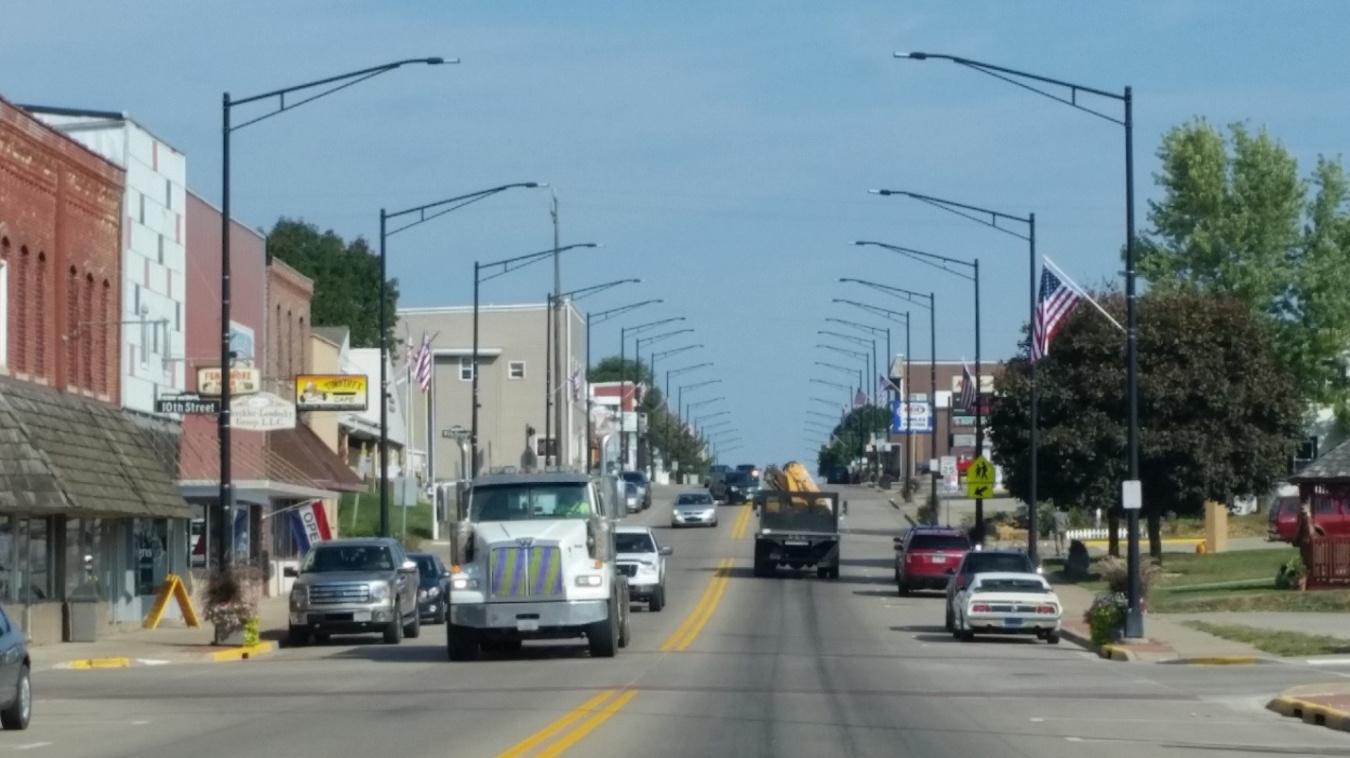In 2010, using U.S. Department of Energy (DOE) State Energy Program funding, a group of communities in Southwest Wisconsin came together to create...
April 5, 2019
View of Main Street, Fennimore, WI after conversion to 100% LED lights. Photo Courtesy: Dennis Biddick, Director of Public Works, City of Fennimore, WI
In 2010, using U.S. Department of Energy (DOE) State Energy Program funding, a group of communities in Southwest Wisconsin came together to create an energy plan under the State of Wisconsin’s Energy Independent Communities program. The funding was used to convene stakeholders, engage utilities, take public comment, and ultimately create a joint energy plan to generate 25% of energy from renewable resources by 2025. Wisconsin has more than 140 communities committed to goals at least as aggressive as 25% by 2025.
To reach this goal, the City of Fennimore, an early participant in the Energy Independent Communities program, sought to reduce energy waste to make the goal more attainable. The Wisconsin Office of Energy Innovation – which provides continuous technical assistance to the participants of Energy Independent Communities – along with Focus Energy and e3 Lighting helped the City of Fennimore develop a plan to reduce energy waste. After evaluating the City's energy usage, the group created a plan to update all exterior lighting on publicly owned buildings to LEDs. The City had 30-year-old outdated high-pressure sodium street lighting that was failing and often erratic, so this solution both helped reduce energy waste and make lighting more reliable and effective throughout the City.
"We've come a long way since our inception as a municipal utility in 1904 when we installed our first 55 kilowatt generation system to light up Lincoln Avenue with 21 electric incandescent street lights," stated Dennis Biddick, Fennimore’s Director of Public Works, "Now our total electrical load is 7.3 megawatts and we have 392 street lights, not including all of the parks and municipal buildings which also are 100% LED for their exterior lighting."
The LED retrofit project has helped reduce energy use by 54% from a 2008 measured baseline. This amounts to 140,000 kWh of energy annually and $6,200 per year in energy costs savings, despite rising electricity costs. The City of Fennimore has shown a commitment to reduce their energy waste and meet the Energy Independent Communities’ energy goal through this effort to upgrade its public lighting fixtures.
The Energy Department's State Energy Program provides funding and technical assistance to states, territories, and the District of Columbia to enhance energy security, advance state-led energy initiatives, and maximize the benefits of decreasing energy waste. The State Energy Program emphasizes the state’s role as the decision-maker and administrator for program activities tailored to their unique resources, delivery capacity, and energy goals.

